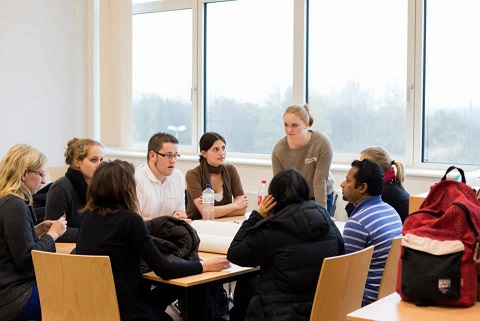-
About
- Our Work
- Get Involved
- Stay Updated

Agricultural production provides income, employment and food at affordable prices as well as raw material for the processing industry and foreign exchange from exports. Creating a sustainable agricultural development path means improving the quality of life in rural areas, ensuring enough food for present and future generations and generating sufficient income for farmers.
Supporting sustainable agricultural development also involves ensuring and maintaining productive capacity for the future and increasing productivity without damaging the environment. In addition, it requires respect for and recognition of local knowledge and local management of natural resources, and efforts to promote the capabilities of current generations without compromising the prospects of future ones.
Consequently, economic and environmental sustainability, adequate farmer incomes, productive capacity for the future, improved food security and social sustainability are important elements of developing countries’ agricultural development.
Bangladesh is a developing country, with a 2013 GDP per capita of some US$1,000, and is regularly hit by natural disasters that severely impact the economy, disproportionally affecting the infrastructure and agriculture sectors, as well as vulnerable groups. Further, nutrition outcomes have not kept pace with the progress achieved with most social and economic indicators. Agriculture occupies some three-quarters of the scarce land space of the country and supports the livelihoods of the majority of the population.
Small holders in Bangladesh are generally poorly integrated into post-harvest agricultural value chains, resulting in a large gap between the commodity value received by farmers and the ultimate retail value of these products (raw or transformed). Principal contributory factors to the limited price pass-through include, among other things: inordinately lengthy supply chains with multiple links/intermediaries, logistical challenges; poor linkages among chain participants and high information asymmetry; post harvest deterioration. The sector also suffers from food safety concerns that limit markets.
On average, In Bangladesh, women constitute about 46% of the total farming population. Women participate in wide range of agricultural activities including crop cultivation, livestock and poultry rearing, homestead gardening and fisheries. Women’s participation was limited mostly to livestock and poultry rearing; their participation in crop farming was at limited level. Only 3.85% of the female workers participated in crop farming in 2008, compared to 53% participation by the male workers. Econometric analysis showed that women’s participation in agriculture was negatively related with landholding, age after some limit, village level electricity, education of household head, distance of bus stop from village and wage rate in non-agriculture; but positively related with age of female workers, irrigated area of female workers’ households, NGO membership of women, remoteness of village and agricultural wage rate in the village. Education and income had positive relationship with empowerment in agriculture for both men and women. However, for both the variables the rate of increase in empowerment was higher for men than for women. In the labour market, women are historically paid less than men for agricultural work. Controlling for differences in age, educational background, industry, occupation and geographic location yields an estimated gender wage gap of 15.9%, but including the effects of industrial and occupational segregation into the estimate yields an estimated wage gap of 23.1% (Kapsoss 2008). Policies and programmes need to seriously address the issues of empowerment and wage differentials between men and women in agriculture.
During Asian regional consultation of GCARD, several speakers give attention on women empowerment in agriculture. In Bangladesh, I work as executive director of a youth lead nonprofit called Center for Human Development, I have experienced to lead several projects on gender and agriculture. From these projects, I realized that rural women keep hidden power in them. We need to find and use that properly. If we can, achieving sustainable goals is matter of time.
This blog post is part of the GCARD3 Youth blogpost applications. The content, structure and grammar is at the discretion of the author only.
Picture: Shoag
Tags:About the author
Author's recent posts
More posts from authorRelated Posts
Comments
No comments made yet. Be the first to submit a commentBy accepting you will be accessing a service provided by a third-party external to https://www.ypard.net/
Get in touch
Email: [email protected]
YPARD Global Coordination UnitHosted by AGRIDEA and the Czech University of Life Sciences Prague
Lausanne, Switzerland and Prague, Czech Republic - Our Work

